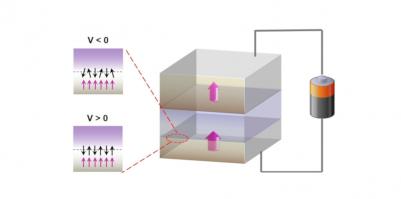Researchers from the University of Arizona discovered that in common Magnetic Tunnel Junctions (MTJ), there's a thin (2D) layer of Iron Oxide. This layer was found to act as a contaminant which lowers the performance achieved by MTJs.

This Iron Oxide layer, however, can also be seen as a blessing - the researchers discovered that the layer behaves as a so-called antiferromagnet at extremely cold temperatures (below -245 degrees Celsius). Antiferromagnets are promising as these can be manipulated at Terahertz frequencies, about 1,000 times faster than existing, silicon-based technology. This is the first research that shows how Antiferromagnets can be controlled as part of MTJs.
Source:
Posted: May 13,2020 by Ron Mertens